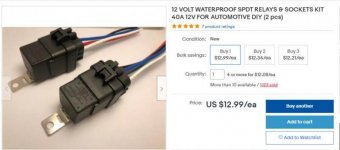I have posted a number of 12vdc pumps on this page suitable for compensated emitters. I use 12vdc almost exclusively.I don't see any other type of dc pump providing the lift or pressure to push up a decent hill from battery power. Or push through a pressure compensating emitter.
I have my diaphragm pump now. Only a cheap one, but I will be giving it away. It's louder than my car. While a submersible drip pump is quieter than a mechanical timer ticking.
I think this pump must be thrashing away with a small diaphragm and no counter weight. It's like a big vibrator.
I looked on the netafim site and was surprised to see the basic PC dripper had a 0.5 - 4 bar range. Or 7.5 - 60 psi. Or 5 - 40 meters. It was the 0.5 that surprised me. Down from a more typical 0.8 and making pumps just under 10 meters possible. While 5 meters is about it for AC fountain pumps in Walmart, there are a large number of 7m+ DC pumps available for pennies. Most sump pumps starts about 7meters to, even the smaller 150w ones. While people typically struggle with 400w variants and NC drippers.
This conversation shows how few people can spec a drip system. Which with 0.5 bar PC's shouldn't be hard at all. I have stood in amany a hydro shop though with dismay. Most can't put together a drip system. A system that drips, yes. A balanced one though, not a hope





